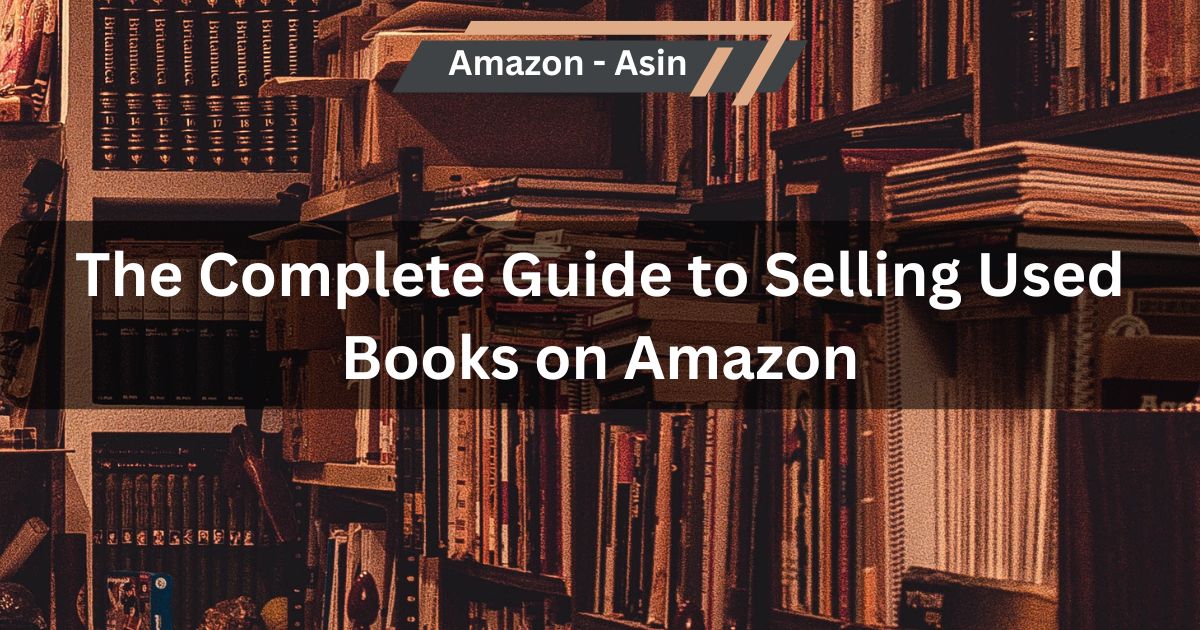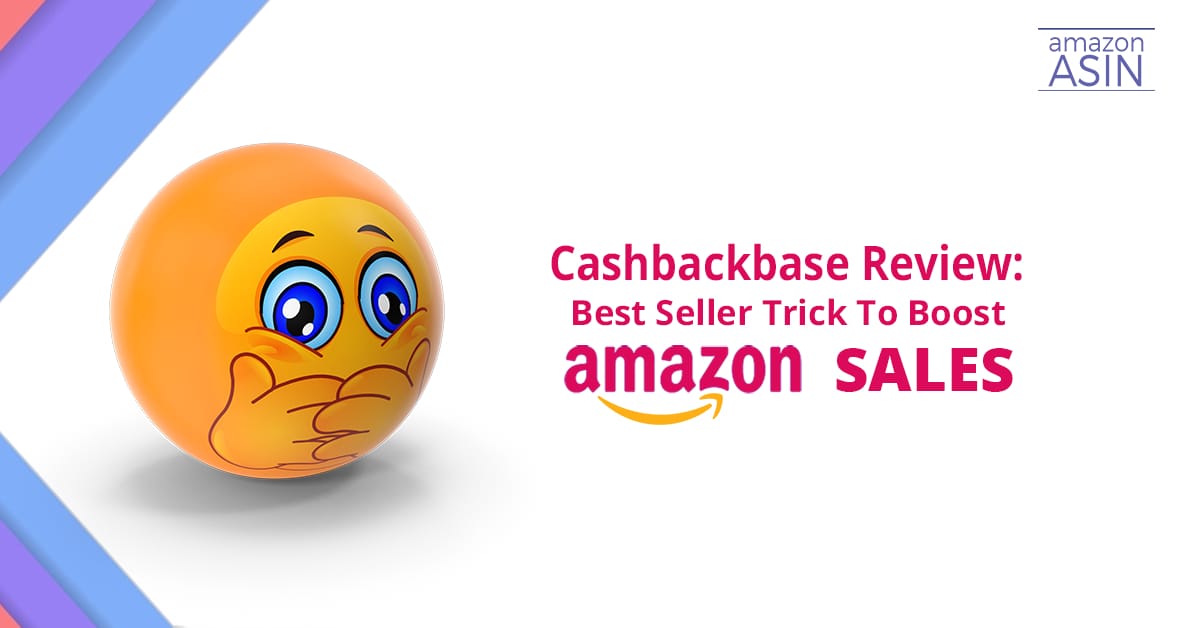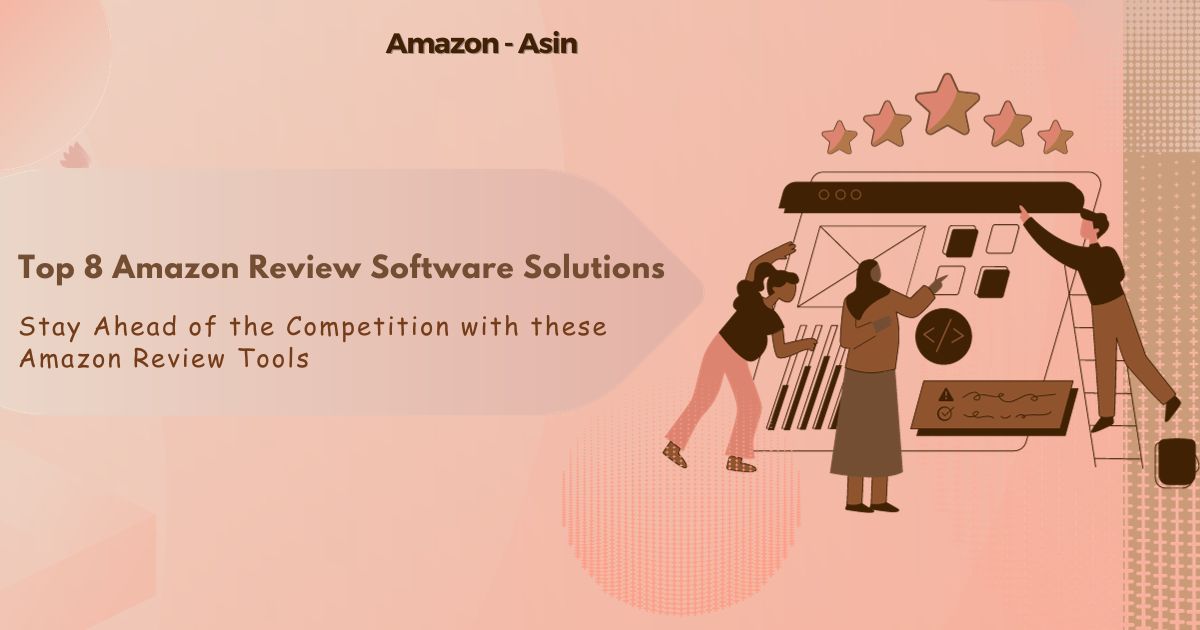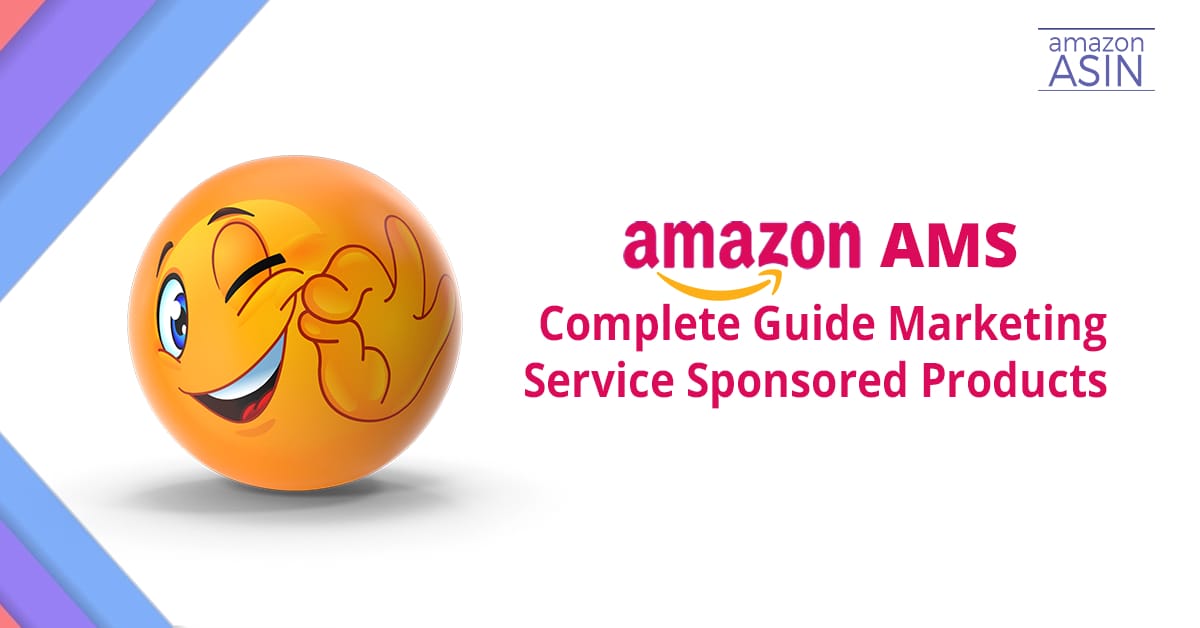Selling used books on Amazon can be an extremely lucrative side hustle or even a full time business. After all, Amazon gets tons of visitors daily, allowing you to turn your love for books into cash or a side job.
One big plus of selling old books on Amazon is the chance to earn extra money. Whether you want to add to your current income or start an online shop, the used book market is a good place to begin without much risk. You can find books to sell at thrift shops, yard sales, or even from your shelves, letting you build a steady cash flow without spending much to start.
What’s more, Amazon’s used book market is huge and varied, meeting the needs of readers with all sorts of tastes and interests. You can find everything from old valuable copies to textbooks and bestsellers. There’s a need for every kind of book you can think of. This variety lets sellers focus on specific types of books or offer a wide range, giving them a better shot at catching buyers’ eyes and making more money.
Why Sell Used Books on Amazon?
Amazon gives sellers an unmatched place to sell used books, with many perks to help them do well. With its massive customer base and easy-to-use site, Amazon has become the place to go for book buyers worldwide.
Selling used books on Amazon has a big advantage: the platform’s huge reach. Amazon, one of the biggest online markets in the world, gets millions of visitors every day. This gives sellers access to loads of possible customers. With so many people browsing, your books have a better chance of being found and bought, boosting your sales.
Also, Amazon makes it easy for sellers to list and manage what they sell. The platform has simple tools and features that make tasks like creating listings, keeping track of orders, and talking to buyers a breeze. This lets sellers spend more time growing their business instead of getting stuck with complicated steps.
Moreover, Amazon’s track record for dependable customer service and safe transactions gives buyers peace of mind, making them more inclined to buy from sellers on the site. This element of trust can be a big plus, as it can boost sales and keep customers returning.
Types of Books You Can Sell
When you’re looking to sell books on Amazon, you’ve got plenty of choices. The site lets you sell new and used books to meet different customer needs and price ranges.
New Books
Selling new books on Amazon can bring in good money if you know publishers or distributors. People often want new books, and buyers like getting a book in perfect shape and being its first owner. But you’ll face tough competition in the new book market, and you might need to set your prices low to catch buyers’ eyes.
Used Books
Secondhand books often have a higher profit margin for individual Amazon sellers. You can find these books in thrift stores, garage sales, or even on your bookshelf. People who want to save money often buy used books, as they don’t mind if the book isn’t in perfect shape if it costs less. Selling books you own can also help you clear out space and make some cash.
Textbooks
Textbooks are a hot item for Amazon’s used booksellers. College kids always need cheap textbooks, which makes this market very profitable. But you need to keep track of which editions are current and make sure the books you’re selling are still useful for today’s classes. This way, you can avoid selling outdated versions students can’t use.
Rare Books
Amazon offers a great platform to show off and sell rare and collectable books if you can spot them. These books can fetch high prices because they’re scarce and appeal to book lovers and collectors. But you must check the book’s condition and worth to price it right and avoid arguments.
Niche Topics
Selling books on specific topics can help you reach a particular market and serve a devoted readership. Books about unusual hobbies, specialized areas of study, or unique interests often sell for more because they’re hard to find and appeal to a specific group.
Mass-Market Paperbacks
Mass-market paperbacks play a key role in the used book market. These cheap and common books can help new sellers or others grow their stock fast. The profits might be smaller, but high sales and quick turnover make mass-market paperbacks a steady income source.
Knowing the types of used books selling on Amazon helps you shape your stock to meet buyer needs and boost your profits. You might focus on one area or offer many kinds of books. The main thing is to pick your books carefully and give clear details and fair prices to keep buyers happy.
Getting Started: Setting Up Your Amazon Seller Account
Head to Amazon Seller Central:
- Open the Amazon Seller Central site.
- Click “Start selling.”
Sign In or Set Up an Account:
- Use your Amazon account to sign in.
- Create a new account if you don’t have one.
Pick Your Selling Plan:
- Choose between two options:
- Individual Plan: Good for selling up to 39 items a month. No upfront fee, but Amazon takes $0.99 per item sold, plus other charges.
- Professional Plan: Costs $39.99 per month with no per-item fee. Great for high-volume sellers.
Give Your Business Details:
- Enter your official business name and address.
- Add your contact info.
- Include a working credit card for charges and invoicing.
Build Your Seller Profile:
- Choose a seller name.
- Optionally, add a logo and write a brief intro about your business.
Get to Your Seller Central Dashboard:
- Use the dashboard to manage listings, monitor orders, and track sales results.
Finding Books to Sell
Getting a constant supply of used books is key to building a thriving bookselling business on Amazon. The main goal is to find books at low prices, which ensures you make a good profit when you sell them. Here are some great spots to source used books:
Thrift Stores
These stores are goldmines from which to source used books at very low prices. Check them often for new stock, and don’t miss the hidden treasures on the shelves.
Library Book Sales
Libraries sometimes hold book sales to clear out their extra or donated books. You can find many titles cheaply, from popular fiction to rare and out-of-print books.
Garage Sales and Estate Sales
Keep watch for garage sales and estate sales near you. These can be great places to find books that people want to sell.
Online Marketplaces
Sites like eBay, Craigslist, and Facebook Marketplace offer good options to find secondhand books that individuals or small vendors are selling. You might have a chance to haggle for better deals when you buy large quantities.
When looking for books, you must know how to spot valuable titles that will do well on Amazon. Here are some pointers:
- Look for Textbooks: College textbooks, especially new editions, can make you good money. Check Amazon to see if people want them and what they sell for.
- Rare and Collectible Books: First-edition signed copies and books in great shape can be valuable to collectors. Look up how rare and valuable a book is before you buy it.
- Niche Topics: Books about specific subjects like hobbies, crafts, or specialized jobs can have dedicated fans and sell for higher prices.
- Popular Fiction: While single mass-market paperbacks might not be worth much, you can group them and sell them as sets, which appeals to book lovers.
- Check for Damage: Look over the books for any signs of harm. Watch out for ripped pages, water stains, or books that are worn out. These issues can significantly affect how much the books are worth.
Listing Your Books on Amazon
Making a good listing greatly impacts getting buyers and boosting your sales on Amazon. A solid listing should give many details about the book, like its shape, version, and cool features. Also, clear pictures and a catchy description can help you sell more books.
Photographs
Add clear and accurate pictures when you put your books up for sale on Amazon. People who want to buy books rely heavily on what they see to check their condition, so your photos should show what you’re selling. Take several pictures from different angles. Show the front cover, back cover, spine, and any noticeable wear or damage. Use good lighting and a plain background to ensure the photos are easy to see and understand.
Descriptions
Photos are great, but a good description can boost your book listings. Start with the basics: title, author, publisher, and when it came out. Then, get into the nitty-gritty of the book’s shape. Mention any scratches, marks, or wear and tear. If it’s a special or rare edition, highlight what makes it cool and why it’s worth more.
When you’re writing these descriptions, keep it short and sweet, but don’t skimp on the details. Use words that clearly depict the book’s condition and catch buyers’ eyes. Don’t oversell it or use wishy-washy language – that’ll just lead to unhappy customers and bad reviews.
Pricing
Choosing the right price for your used books is key in drawing in buyers and boosting earnings. Look at similar listings on Amazon to understand what people are paying for the book you want to sell. Think about things like how good the book’s shape is, how rare it is, and how many people want it when determining your price.
Most experts say it’s a good idea to price your books a bit lower than other sellers if you’re new to selling or if many people offer the same book. This can help you catch more buyers’ eyes and build a good name on the site.
But watch out – don’t price your books too low. This can make your inventory less valuable and cut into your profits. Try to find a sweet spot between prices that’ll attract buyers and ones that’ll make you money.
Keep in mind that listings that work well – with great photos, lots of details, and fair prices – can boost your chances of doing well when you sell used books on Amazon.
Fulfillment Options: FBA vs. FBM
When you sell books on Amazon, you have two main ways to handle orders: Fulfillment by Amazon (FBA) or Fulfillment by Merchant (FBM). Each way has its good and bad points, and picking the right one can make a big difference in how well your business does.
Fulfillment by Amazon (FBA)
FBA allows you to send your inventory to Amazon’s fulfillment centers. Amazon then manages the entire order fulfillment process. This includes storage, picking, packing, and shipping. When a customer buys your book, Amazon takes care of everything. They pick up the item from their warehouse and ship it to the customer.
Pros of FBA:
- Your products become eligible for Amazon Prime shipping. This boosts their visibility and sales potential.
- Amazon handles customer service and returns. This saves you time and energy.
- Your products can join other Amazon programs. These include Subscribe & Save and Multi-Channel Fulfillment.
- You gain access to Amazon’s huge logistics network and infrastructure.
Cons of FBA:
- Amazon’s FBA fees will cut into your profits.
- You have less say in how your products are handled and packaged.
- Your inventory might mix with other sellers’ items, a process known as commingling.
Fulfillment by Merchant (FBM)
FBM means you take care of the whole fulfillment process. Amazon tells you that when a customer orders something, it’s up to you to pick, pack, and ship the order straight to the customer.
Pros of FBM:
- You can control the entire process of fulfillment and packaging.
- Amazon charges no extra fees beyond the usual selling costs.
- You can offer customized packaging or add inserts to your orders.
Cons of FBM:
- You need to handle customer service and return yourself.
- Shipping might cost more, as you can’t access Amazon’s negotiated rates.
- Your items don’t qualify for Amazon Prime shipping, which could limit your sales potential.
Marketing and Promoting Your Books
Make Your Listings Better: Make sure your book listings have the right keywords, great descriptions, and clear pictures. This helps buyers find your books and gives them the info they need to decide if they want to buy.
Use Amazon Ads: Amazon has different ads, like Sponsored Product and Sponsored Brand ads, that can make your book more visible and reach people who want to buy it. These ads appear at the top of Amazon’s search results and on product pages, meaning more people are likely to see your books.
Use Amazon Marketing Services: Amazon Marketing Services (AMS) offers tools and features to help sellers boost their product promotion. These include Amazon Stores, which lets you build a custom storefront to display your book collection, and Amazon Posts, which allows you to share engaging content and updates with your followers.
Put Pricing Strategies into Action: Offering competitive prices and running smart promotions can attract buyers and boost sales. Consider giving discounts, package deals, or time-limited offers to encourage purchases and spark interest in your books.
Use Social Media: Social media platforms like Facebook, Twitter, and Instagram can help you promote your book listings and connect with potential customers. Post updates, give sneak peeks, and hold social media contests or giveaways to create excitement and bring people to your Amazon listings.
Create an Email List: Get email addresses from interested buyers and start an email list. This lets you keep your readers updated about new book listings, sales, and news, which builds customer loyalty and leads to more sales.
Ask for Reviews: Good reviews can greatly impact whether someone buys your book. Ask happy customers to leave reviews for your books, which can help build trust and make potential buyers more likely to purchase.
Tips to Maximize Profit by Selling Used Books on Amazon
Pricing Plans
One way to boost your profits when selling used books on Amazon is to use smart pricing tactics. While it’s tempting to undercut rivals, you must balance competitive prices and good profit margins. When you set your prices, consider the book’s shape, scarcity, and how much people want it.
Also, monitor your sales rank and change prices as needed. If a book is doing well, you might be able to bump up the price a bit. On the flip side, a short-term price cut could help clear stock if sales are sluggish. Using Amazon’s repricing tools can make this job easier.
Managing Inventory and Avoiding Storage Fees
Amazon hits sellers with long-term storage fees when books sit in their warehouses too long. To dodge these charges, you need a solid inventory system. Keep an eye on your sales numbers and restock hot sellers while clearing out slow movers through sales or price cuts.
Consider using inventory software or methods like just-in-time ordering to keep things lean and efficient. Also, Amazon’s removal and disposal options should be used when needed to avoid racking up huge storage fees.
Handling Customer Service and Returns
Great customer service is key to success in selling books on Amazon. Answered customer questions, handled concerns like a pro, and worked to solve problems quickly and to the customer’s satisfaction.
Regarding returns, get to know Amazon’s rules and steps. Give easy returns and refunds when needed, as this can help create trust and good reviews from buyers. Think about setting up a way to check quality to cut down on returns in the first place.
Is Selling Books on Amazon Profitable?
Selling used books on Amazon can make you money, but you must keep your hopes in check. How much you earn depends on things like the book’s shape, how popular it is, and what price you set. But if you play it smart and put in the work, you can create a steady cash flow from selling old books on Amazon.
One big plus of hawking used books on Amazon is that it doesn’t cost much to start. You don’t have to pay for a store, power bills, or employees like you would with a real bookshop. Plus, Amazon has tons of customers and is easy to use, so you can get your books in front of more people and sell them faster.
While profits can fluctuate, many Amazon booksellers who do well report making $500 to $2,000 a month. Some even turn this into their main job, pulling in over $5,000. Remember, though, that these numbers aren’t set in stone. What you earn depends on things like how many books you sell, what prices you choose, and how good you are at finding cheap books to resell.
These success stories excite you, but remember that selling books on Amazon takes hard work, commitment, and a readiness to keep learning and changing. But if you think the right way and use good plans, you can turn your passion for books into a money-making business on Amazon.
Conclusion
Selling used books on Amazon can make you money and be fun if you love books or want to start a business. This guide shows you how to find books, list them, and sell them in one of the biggest online stores in the world.
To do well, you need to pick the right books, write good descriptions, and use Amazon’s tools to reach more buyers and sell more. Whether you want to earn some extra cash or build a big online book business, you’ll need to stick with it, pay attention to small things, and keep learning and changing as you go.
Don’t let competition or challenges scare you off. If you approach it right and plan well, you can find your own space and do well-selling books online. Enjoy the process, keep loving books, and feel good about turning your passion for reading into a money-making venture.
Start today by opening an Amazon seller account and putting up your first set of books for sale. The online book market is ready for you, and if you work hard and stay committed, you can turn what you love into a business that pays off and lasts.




